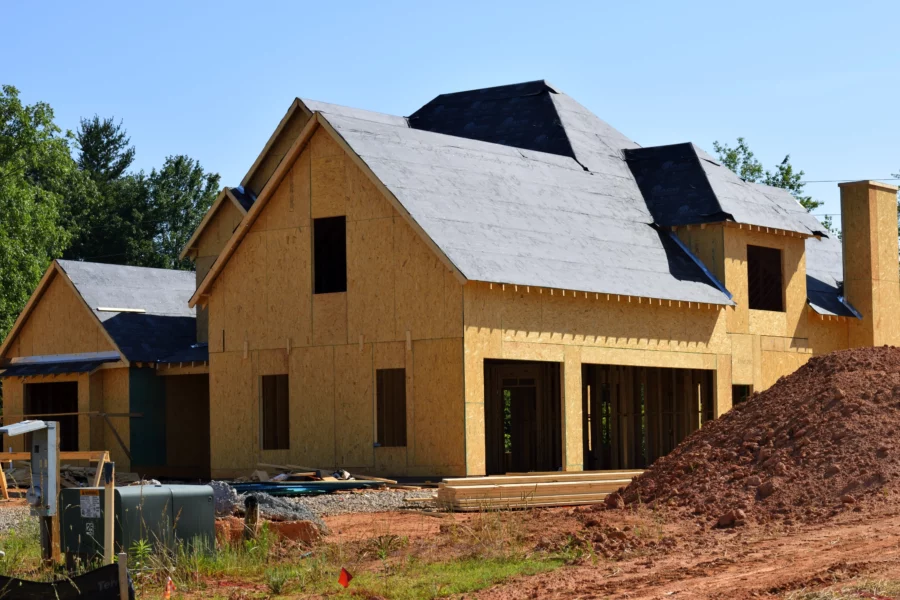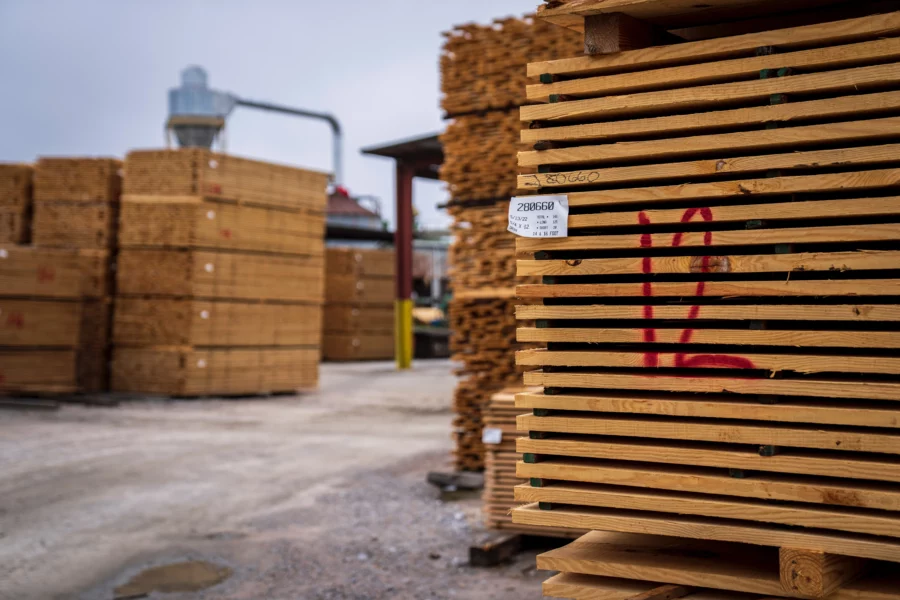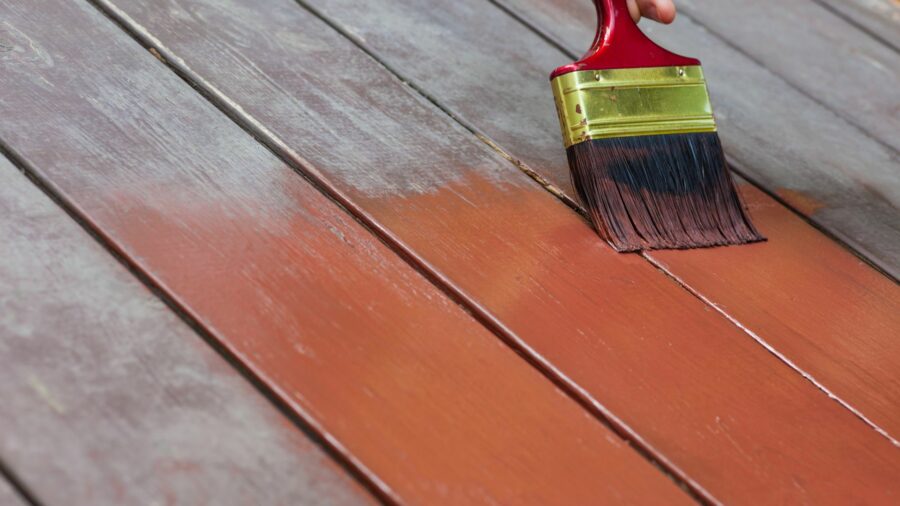5 Things to Know About Pressure-Treated Wood

Untreated wood, while charming in its raw state, faces several challenges when exposed to the elements. Moisture can seep into its fibers, causing warping, swelling, and ultimately, structural instability. Pests find the untreated wood irresistible, leading to infestations that compromise the integrity of wooden structures. Additionally, harsh sunlight can lead to fading, cracking, and premature aging, leaving untreated wood vulnerable.
So what is pressure-treated wood and why is it used over untreated lumber? Here is a list of five important things to know about pressure-treated wood.
- Pressure-Treated Wood Prevents Decay
- Pressure-Treated Wood can be Fire Retardant
- Pressure-Treated Wood is Cost-Effective
- Pressure-Treated Wood can be Painted or Stained
- Pressure-Treated Wood is Safe to Cut
1. Pressure-Treated Wood Prevents Decay
Through a process called pressure treatment (PT), lumber is placed in a tank where the air is removed and treated with a preservative. This enhances its durability and safeguards it against the harsh realities of decay, pests, and weathering. Treated wood use applications include above-ground or ground-contact lumber, interior framing, and roofing. Other uses include fencing, siding, decking, and landscape walls.
Southern Yellow Pine (SYP), Spruce, and Douglas Fir are examples of lumber that can be pressure-treated. Western Red Cedar has natural preservatives to resist rot and decay which means they do not need to be treated, however, they still can be.

2. Pressure-Treated Wood can be Fire Retardant
Although pressure-treated wood can be fire-retardant, one misconception some people may have is that all pressure-treated wood is fire-retardant. In order to be considered fire-retardant, the wood has to be treated with specific fire-retardant chemicals. This is what allows the wood to slow the spread of fire and produce a non-combustible gas.
Genuine fire-retardant wood stands apart from wood that just has an external fire-retardant coating on its surface. The critical distinction lies in the full infusion of fire-retardant chemicals within the wood itself. This is a characteristic that qualifies it as authentically fire-retardant and compliant with building codes. It's essential not to confuse the two, as only wood with these integrated fire-retardant properties can truly offer the desired level of fire safety and protection.
Fire retardant lumber may be used for interior building structures such as floor joints, sheathing, roof trusses, plywood, as well as exterior applications.
3. Pressure-Treated Wood is Cost-Effective
One of the primary reasons pressure-treated wood proves to be cost-effective lies in its enhanced durability. Though pressure-treated wood may have a slightly higher initial cost compared to untreated wood due to the treatment process, its extended lifespan and reduced maintenance needs make it an economic choice. Homeowners and builders can expect to recoup the initial investment through the wood's prolonged performance, ultimately resulting in cost savings over the years.
Additionally, the longevity of pressure-treated wood translates to lower maintenance costs over time. Unlike untreated wood, which demands regular treatments and protective coatings, pressure-treated wood requires minimal upkeep. A simple sealant or stain application every few years is usually sufficient to preserve its beauty and performance, making it a smart investment for the long haul.
So, whether you're constructing a deck, a fence, or a garden feature, pressure-treated wood’s enhanced durability, reduced maintenance requirements, and long-term savings make it an economically viable option for various projects.

4. Pressure-Treated Wood can be Painted or Stained
Pressure-treated wood can be a perfect canvas for painting or staining, offering endless possibilities to elevate your wood projects. New pressure-treated wood requires some time to weather and dry out before applying paint or stain. This process, known as "seasoning," allows the wood to reach an optimal moisture content, ensuring better adhesion of the paint or stain.

Painting Pressure-Treated Wood
When it comes to painting pressure-treated wood, the key is choosing the right type of paint. Acrylic latex paints are a popular choice for their ability to adhere well to pressure-treated wood and their resistance to cracking, peeling, and fading. Before applying the paint, it's advisable to use a primer specifically designed for pressure-treated wood to ensure proper bonding and longevity of the paint finish.
Staining Pressure-Treated Wood
Staining is an excellent option for those who wish to retain the natural grain and texture of pressure-treated wood while adding a protective layer. Stains come in various tones, from transparent to semi-transparent and solid colours, allowing you to achieve the desired look. Applying a wood stain enhances the wood's appearance and helps protect it from the sun's UV rays and moisture, preventing premature weathering.
5. Pressure-Treated Wood is Safe to Cut
Until 2004, pressure-treated wood was infused with chromated copper arsenate (CCA), a preservative containing arsenic. The EPA banned arsenic-treated wood in 2004 as it is considered poisonous, and products today are treated with Alkaline Copper Quaternary (ACQ) and Propiconazole.
Cutting pressure-treated wood that is treated today is safe to cut, but you should always take precautions.
- Always wear a mask when cutting or drilling wood
- Wear protective eyewear to avoid getting any particles in your eyes
- Never cut indoors and make sure there is plenty of ventilation
- Clean up any dust or scrap wood and take it to the dump - as mentioned before, PT wood can be fire retardant which will cause the wood to burn slowly and leave chemicals in the air
When it comes to exterior building projects, pressure-treated wood stands as the ultimate choice. Its versatility shines through in framing, decks, porches, railing, fencing, sheds, garden boxes, landscape walls, plywood, flooring, and beyond. With proper maintenance, pressure-treated wood ensures long-term protection, preserving the beauty and durability of your project for years to come.
For all your pressure-treated lumber needs, contact us at Olympic Industries. We are your trusted source for high-quality lumber products, including spruce, cedar, fir, SYP, and OSB. Let's bring your projects to life with our exceptional materials. Reach out to us today!


